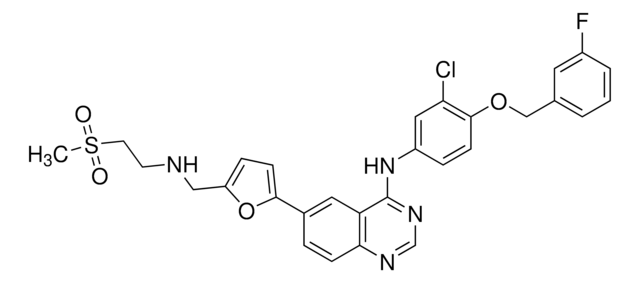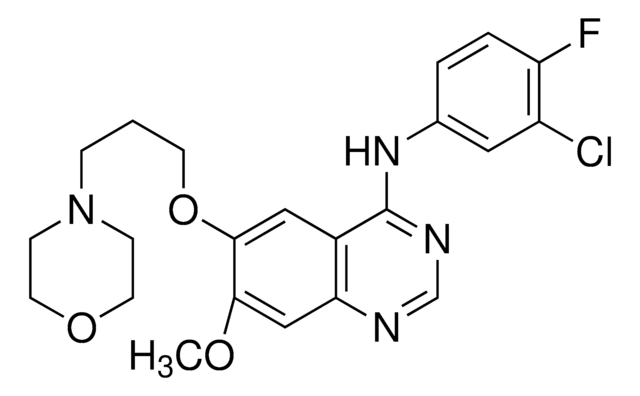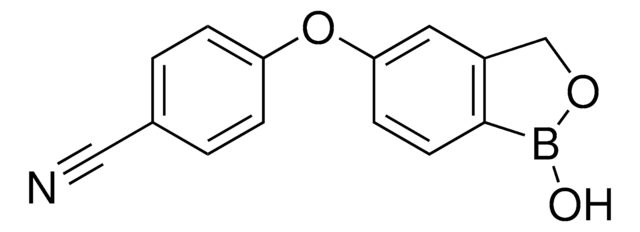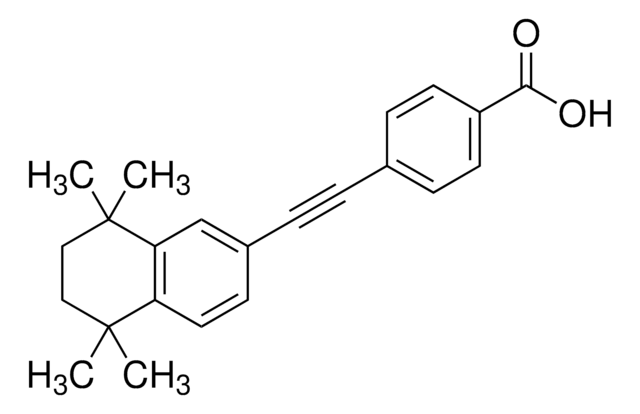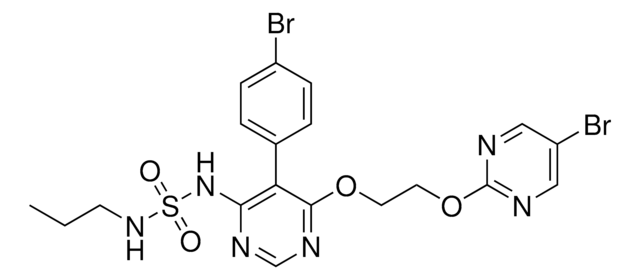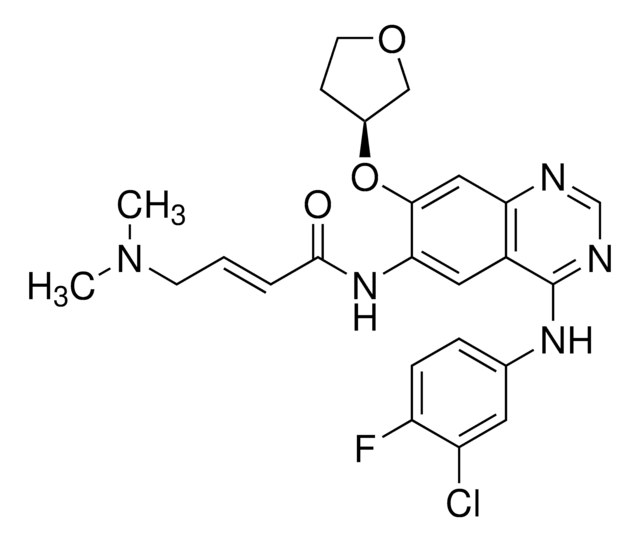おすすめの製品
品質水準
アッセイ
≥98% (HPLC)
フォーム
powder
保管条件
desiccated
protect from light
色
white to beige
溶解性
DMSO: 5 mg/mL, clear (warmed)
保管温度
−20°C
SMILES記法
Fc1c(cc(cc1)Nc2c3c(ncc2C#N)cc(c(c3)NC(=O)\C=C\CN(C)C)OCC)Cl
InChI
1S/C24H23ClFN5O2/c1-4-33-22-12-20-17(11-21(22)30-23(32)6-5-9-31(2)3)24(15(13-27)14-28-20)29-16-7-8-19(26)18(25)10-16/h5-8,10-12,14H,4,9H2,1-3H3,(H,28,29)(H,30,32)/b6-5+
InChI Key
WVUNYSQLFKLYNI-AATRIKPKSA-N
生物化学的/生理学的作用
その他情報
シグナルワード
Danger
危険有害性情報
危険有害性の分類
Acute Tox. 3 Oral
保管分類コード
6.1C - Combustible acute toxic Cat.3 / toxic compounds or compounds which causing chronic effects
WGK
WGK 3
引火点(°F)
Not applicable
引火点(℃)
Not applicable
適用法令
試験研究用途を考慮した関連法令を主に挙げております。化学物質以外については、一部の情報のみ提供しています。 製品を安全かつ合法的に使用することは、使用者の義務です。最新情報により修正される場合があります。WEBの反映には時間を要することがあるため、適宜SDSをご参照ください。
毒物及び劇物取締法
劇物
Jan Code
PZ0197-5MG:
PZ0197-VAR:
PZ0197-25MG:
PZ0197-BULK:
最新バージョンのいずれかを選択してください:
ライフサイエンス、有機合成、材料科学、クロマトグラフィー、分析など、あらゆる分野の研究に経験のあるメンバーがおります。.
製品に関するお問い合わせはこちら(テクニカルサービス)


